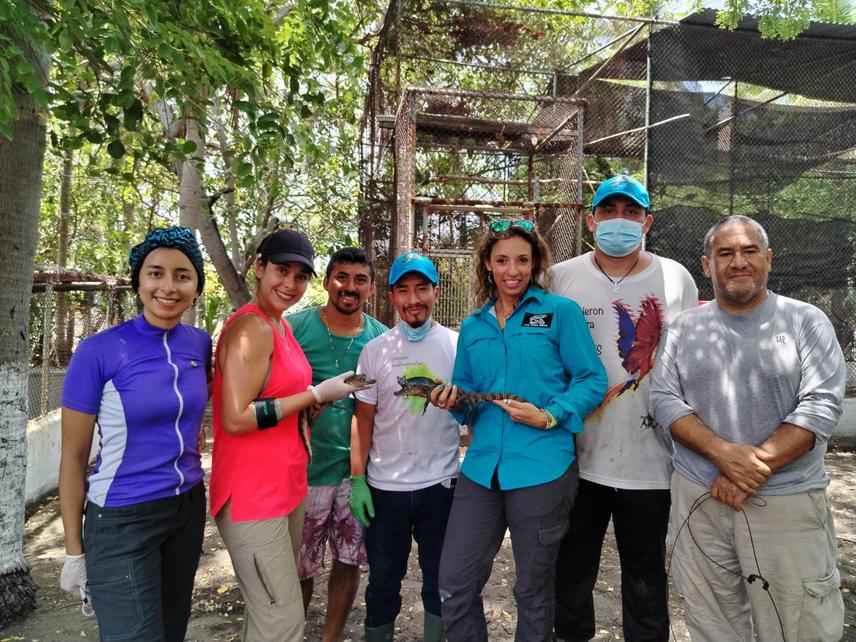Valerie Andrea Corado García
Other projects
15 Jan 2021
Current Status of Crocodylus acutus Populations and their Anthropogenic Interaction in the Sarstún River Multiple Use Area, Izabal, Guatemala
Though the American crocodile (Crocodylus acutus) is widely distributed across 29 countries, it faces significant threats in some areas and has been extirpated from parts of its historical range. Globally, it is classified as "Vulnerable" by the IUCN and listed on Appendix I of CITES (2017). In Guatemala, C. acutus is considered Critically Endangered, categorized as Category 1 on the National Council of Protected Areas' (CONAP) List of Threatened Species due to small wild populations, limited distribution, outdated data, and an unviable population risk assessment.

Training staff from ARCAS Rescue Center on how to take measurements and tissue sample from Crocodylus acutus individuals. © Oscar González.
Before 2018, there were no records of C. acutus in Guatemala. In response, Corado-Garcia conducted the first part of a country-wide survey in 2021, focusing on the Caribbean slope in Río Dulce National Park, Sarstoon River, and Bocas del Polochic Wildlife Reserve. Encounter rates were very low, with only 2.13 crocodiles per kilometer on a 56.3 km survey stretch in the Izabal region. Most crocodiles were observed in Bocas del Polochic Wildlife Refuge, where significant anthropogenic impacts affected the species. No crocodiles were observed in Río Dulce National Park or Sarstoon River during this survey, despite reports of higher presence 15 years ago, but sporadic sightings continue in Río Dulce as reported by locals.
In 2024, I conducted surveys on the Southern Pacific slope, which yielded just 0.47 crocodiles per kilometer, representing only two wild populations outside protected areas. This prompts the question about the true distribution of the species across Guatemala. This project aims to conduct a comprehensive national survey of C. acutus, assessing species distributions, population estimates, and threats. The survey will allow us to close distribution gaps in regions such as the Motagua River, protected areas of Izabal, and the Gulf of Mexico in Alta Verapaz, where no previous data exists.
The lack of information limits understanding of local crocodile populations and hinders effective conservation planning. In collaboration with community leaders, NGOs, and government organizations, the project will not only assess the conservation status of these species but also raise awareness about their ecological importance and the need for conservation efforts in Guatemala.